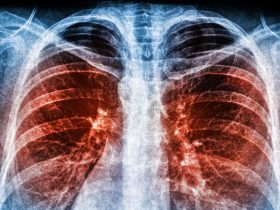As COVID-19 continues to test America’s healthcare system, the medical community responds with increased efforts to mitigate the virus’s spread, create and approve vaccines, review new strains, and save lives. Even as everyone watches this remarkable juggling act, one cannot help but pick up on free standing, clinically relevant COVID-19-related information based on experience, observation, or sheer necessity that may prove helpful in dealing with seasonal influenza outbreaks post-pandemic.
Here are five random pearls that COVID-19 either triggered or brought fresh attention to – with each presenting a potential way to improve flu care in the United States.
1. The pandemic has intensified awareness of long-existing, deep fissures in the US health system. At the forefront of these inequities is access to and administration of the COVID-19 vaccine. As America remedies this injustice, equitable access to the flu vaccine could follow.
According to a CNN data analysis from 14 states, COVID-19 vaccine coverage is on average twice as high among White people as it is among Black and Latino people.1 However, the Centers for Disease Control and Protection (CDC) states that COVID-19 infection, hospitalization, and death rates among Black and Latino Americans are disproportionately higher than White people when compared to their share of the United States population.2
The current highly publicized and closely watched effort to achieve COVID-19 vaccine equity could very well drive improved flu vaccine disparities among racial and ethnic minority groups.3,4
The ongoing annual flu vaccine imbalance, according to a 2019-2020 CDC study, is nothing to sneeze at. Flu vaccination rates among people in racial and ethnic minority groups are lower than vaccination rates among non-Hispanic White persons – and particularly among adults.
The CDC’s study estimates that overall flu vaccine adherence among adults (age 18 years and older) hovered around 48% during the 2019-2020 flu season. However, disparities in flu vaccination coverage become apparent when this stats is broken down into racial and ethnic minority groups. Flu vaccine adherence was approximately:
- 38% among Hispanic or Latino persons
- 41% among non-Hispanic Black persons
- 42% among American Indian or Alaska Native persons
- 52% among Asian persons
- 53% among non-Hispanic White persons
2. In an effort to mitigate exposure to the COVID-19 virus, the medical community reduced in-office visits by taking virtual healthcare to a whole new level of patient care. It turns out that a strong percentage of patients prefer videoconferencing, remote monitoring, electronic consults, and wireless communications. As a result, telemedicine may be here long after the pandemic ends – an option that would be particularly applicable to influenza care.
Several reports support telehealth’s continued popularity. According to a May 2020 survey conducted online by The Harris Poll, nearly half (42%) of the 2,000+ US adults (18 years or older) surveyed reported using telehealth services since the pandemic first began. Among those who gave telehealth a thumbs up, here’s a snapshot of their opinions:5
- 82% of those who had used telehealth services say they love/like it.
- 65% believed that virtual visits are more convenient than in-office appointments.
- 63% felt they worried less about being exposed to other potentially sick patients.
- 51% said they would continue using telehealth services post-pandemic because they like the convenience it offers.
- 44% found it easier to schedule a telehealth appointment vs. an in-office appointment.
- 38% appreciated the fact that follow-ups/communications post-appointment were more streamlined.
If these stats bear out anything, it’s the fact that telehealth has been promoted from a “novel concept that might work” to something patients will now expect from their healthcare system.
3. The first two COVID-19 vaccines authorized for use in the US both rely on messenger RNA technology, making RNA-based vaccines the “darling” of cutting-edge vaccine advancements. As the concept continues to move forward, some researchers predict that RNA vaccine technology will drive improvements in seasonal influenza vaccines.
RNA-based vaccination actually dates back to the 1990s but the technology wandered in and out of the spotlight until COVID-19. Unlike most vaccines, which trigger an immune response by putting a weakened or inactivated germ into the body, RNA vaccines, also called mRNA vaccines, “teach” cells how to make a protein – or a piece of a protein – that triggers an immune response inside the body. The antibodies produced by this immune response protect against infection if the real virus enters the body, essentially turning the body into an inoculation factory.
According to the CDC, interest in RNA vaccines increased with the pandemic because they can work – but equally as important, RNA vaccines can be expeditiously developed in a lab using readily available materials. As the CDC explains, “This means the process can be standardized and scaled up, making vaccine development faster than traditional methods of making vaccines.”6
Between a stronger-then-ever interest in RNA-based vaccine technology along with advancements made due to the COVID-19 vaccines, researchers are looking toward RNA vaccine development in new areas – including perhaps a universal flu shot that would not need annual tweaking and would work against any strain of the influenza virus.
4. The coronavirus pandemic stretched emergency room teams, intensive care unit staff members, and urgent care healthcare providers far beyond reasonable expectations. The experience has led some to ask if it’s not time to allow non-physicians – nurses, nurse practitioners, and physician assistants – to play a bigger role in healthcare.
A Harris Poll, which included 300 full-time nurses nationwide, reports several insights that point to changes already in progress due to COVID-19 – and these tweaks indicate long-range opportunities for change.7
- Nearly three out of four survey respondents reported assuming more leadership responsibilities since the pandemic began
- 84% said they wished nurses had a stronger leadership role in the pandemic crisis.
- 78% reported that their fellow healthcare team do view them as a leader.
5. Social distancing, mask-wearing, hand-washing, and the nationwide work-at-home practice helped decrease the spread of the coronavirus. Americans apparently got a twofer. These same doctor-recommended safety precautions also reduced risk for the flu – which explains unprecedented low numbers as the 2020-2021 flu season hits the halfway mark. Experts suggest that some Americans may continue to take proactive steps to reduce risk of influenza in the future.
Here are a few stats that support the facts.
- Between September and December 2019, before COVID-19 officially began, the Centers for Disease Control and Prevention (CDC) had reported abut 65,000 flu illnesses nationwide, resulting in 55,000 hospitalizations and 2,900 deaths.8
- Between September and December 2020, with COVID-19 commanding nearly every headline and thought, the CDC reported 1,016 flu cases nationwide and 101 laboratory-confirmed influenza-associated hospitalizations. (Deaths associated with influenza were not tabulated as focused calculations turned solely to COVID-19.)9
What’s behind the 2020-2021 low flu season numbers? In a Johns Hopkins University press release, Eili Klein, PhD, associate professor of emergency medicine at the Johns Hopkins University School of Medicine, explains. “Though caused by a different virus from the one that causes COVID-19, the flu is also a respiratory viral disease, so everything we are doing to slow transmission of COVID-19, such as wearing face masks, frequent handwashing, and physical distancing, should also reduce transmission of flu.”
As for the 2021-2022 flu season, Dr. Klein suggests a possible uptick in cases. “Because of the current restrictions and precautions everyone is taking this season, far fewer people will be infected or exposed to the flu virus, and therefore won’t become immune to certain strains of the virus,” he says. “So the number of people who may have more severe infections next year is likely to be greater because immunity will be lower.”
But next year is next year. And what will happen is anyone’s guess.
1. CNN; White people are getting vaccinated at higher rates than Black and Latino Americans ; retrieved at: https://www.cnn.com/2021/01/26/us/vaccination-disparities-rollout/index.html?utm_term=1611750128260b9b8b397765f&utm_source=Coronavirus+Update+-+January+27%2C+2021&utm_medium=email&utm_campaign=278866_1611750128262&bt_ee=u%2FgvCKYWnEsphDmEEXwZ0rNIt12K5MpakuUk5TTaXcUvZkl1oyCGmqgkej1Vq1Ww&bt_ts=1611750128262 2. Centers for Disease Control and Prevention; COVID-19 Racial and Ethnic Health Disparities; retrieved at https://www.cdc.gov/coronavirus/2019-ncov/community/health-equity/racial-ethnic-disparities/increased-risk-illness.html 3. The Centers for Disease Control and Prevention; Flu Disparities Among Racial and Ethnic Minority Groups; retrieved at https://www.cdc.gov/flu/highrisk/disparities-racial-ethnic-minority-groups.html 4. The Centers for Disease Control and Prevention; FluVaxView; retrieved at: https://www.cdc.gov/flu/fluvaxview/index.htm 5.Updoc/Harris Poll; The 2020 Virtual Care Report; retrieved at https://info.updox.com/hubfs/Updox%202020%20Virtual%20Care%20Data%20Report.pdf 6. The Centers for Disease Control and Prevention; COVID-19; Understanding mRNA COVID-19 Vaccines; retrieved at https://www.cdc.gov/coronavirus/2019-ncov/vaccines/different-vaccines/mrna.html 7. The Harris Poll; Industry Voices—2020 is the year of the nurse. 2021 should be the year healthcare leaders act on their feedback; retrieved at https://theharrispoll.com/industry-voices-2020-is-the-year-of-the-nurse-2021-should-be-the-year-healthcare-leaders-act-on-their-feedback/ 8.Pharmacy Times; Flu Activity High During Last Week of 2019, Continues to Rise; retrieved at https://www.pharmacytimes.com/news/flu-activity-high-during-last-week-of-2019-continues-to-rise 9. The Centers for Disease Control and Prevention; U.S. Virologic Surveillance; retrieved at https://www.cdc.gov/flu/weekly/weeklyarchives2019-2020/week52.htm







